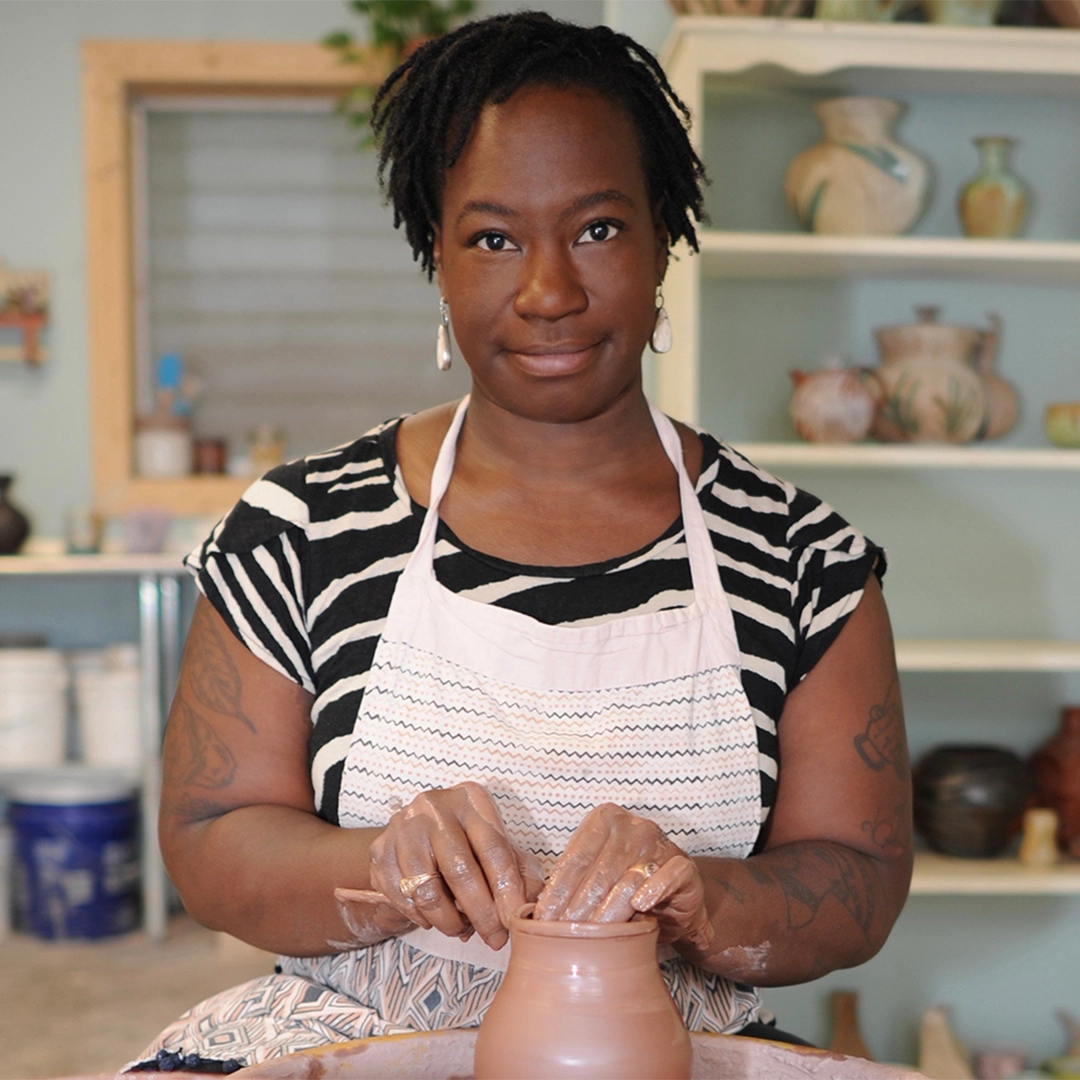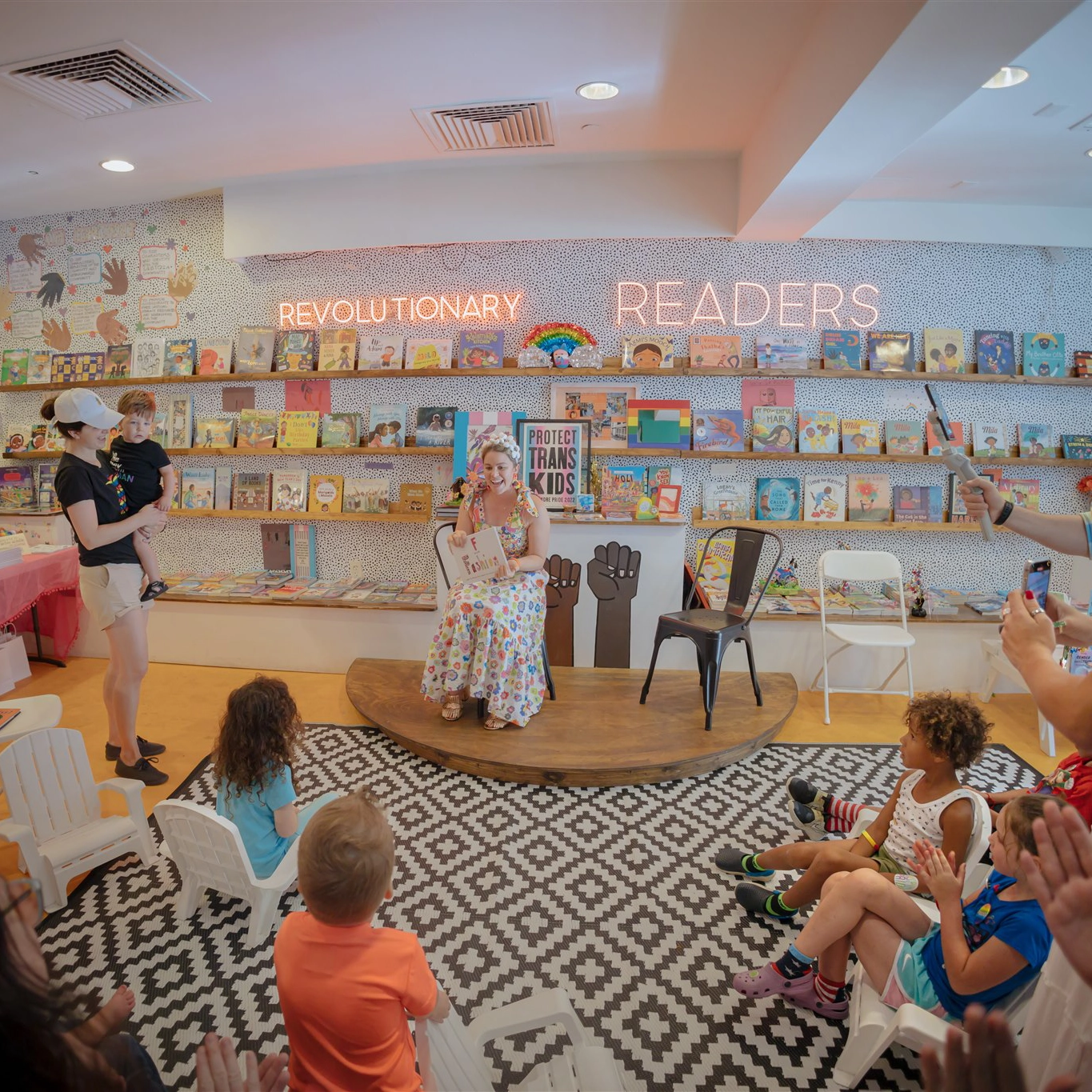Dark & Dreamy: Inside the World of Artist Alexa Kleinbard
The Tallahassee painter’s works have depicted some of Florida’s oldest most confounding landscapes and their heavenly properties for decades.

Anyone who appreciates the native mystique of the Florida Panhandle will at least entertain the theory, advanced in the 1950s by one Elvy Edison Calloway, Baptist preacher and geographical fantasist, that the biblical Garden of Eden is located near Bristol. Paradise, or something like it, sprawls across a 1,200-acre site now owned by the Nature Conservancy, off State Road 12. The place is no longer a tourist trap, but you can still visit, hike in the woods and take in the earthly splendor that inspired the reverend’s declaration.
You can’t miss it. There’s even a sign that reads “Garden of Eden Road.”
I was thinking about Calloway, and those anointed woods, as I pulled into the historic town square in Quincy one afternoon earlier this year. Inside the Gadsden Art Center & Museum, a half-hour’s drive from Adam and Eve’s supposed homestead, a contemporary visionary had conjured her own lush and fertile topography modeled on much the same terrain. The Tallahassee artist Alexa Kleinbard was waiting inside, in the bright and airy main gallery space of the former hardware store, surrounded by a series of her paintings inspired in part by the Dead Lakes–an enchanted 6,700-acre swamp near Wewahitchka haunted by the ragged stumps of hundreds of dead cypress trees and famous for the rarefied honey of its White Tupelo flowers.
“There’s another world in there,” says Kleinbard, 68, who rhapsodizes about the landscape and its nearly hallucinogenic intensity. “It’s a world we’re not part of, but we are. It’s like music. You hear the insect music. You hear the bird music. The sound of the water as it laps up the cypress. The music of the frogs and alligators and foxes when they squeal out and bark. It’s a different world, and it encapsulates you away from the muck of humans.”
NATURES’ REMEDIES
In Kleinbard’s paintings, however, those humans are closing in. The title of her retrospective, “Twilight in the Garden,” alludes not only to the transition between waking and dreaming worlds–a cherished time of day for the artist–but the darkness that falls as unique natural habitats are despoiled. Her latest series draws on photographic studies made in Florida’s Dead Lakes and outside the cabin retreat she shares with her husband, artist Jim Roche, amid 30 acres of forest on a north Georgia mountainside. The paintings capture native flora and fauna amid an intense swirling atmosphere of penumbral hues in blue and green, a once-pristine Eden threatened by exploratory gas drilling, highway developments and the warming climate.
There’s another world in there. It’s a world we’re not part of, but we are. It’s like music.
— Alexa Kleinbard
“I like to work on emotion and light and create that feeling of beauty and angst together,” says Kleinbard, who eschews conventional canvases to paint in water-based oil on sustainable cabinet-grade Russian birch. “It’s kind of a magical spirit place, but also where deadly things are going on.”
Cynthia Hollis, the Tallahassee gallerist who curated the retrospective, likens the sensibility to Francisco Goya’s Black Paintings, which the Spanish master painted on the walls of his house in the last years of his life. Kleinbard’s approach, “somehow makes the climate emergency even more poignant. I’ve seen people weeping in front of her work.”


Kleinbard, who evolved into painting out of her earliest work as a sculptor, has long drawn on the natural world as her muse, documenting everything from healing plants (Remedies, a series of vibrant cutouts) to a menagerie of creatures illustrated in collaged silhouettes that evoke their endangered habitats (Corridors). Her paintings offer not only vivid aesthetic pleasures, but visually catalog native species.
“Butter Button Bush, Pitcher Plants, Jack in the Pulpit, Bloodroot … I really want to show what belongs here should we lose all of it,” she says.
RAMBLING HEART
Several siblings in her large Pennsylvania family grew up to become journalists, yet even as an outlier Kleinbard, the youngest, seems to have picked up a family trait for reportage. Eager to slip out of a crowded house, she sought refuge in nature. “I wanted to be in the woods,” she says. “I felt safer there.”
Most of Kleinbard’s art-life has been shared with her husband, Jim Roche, a multimedia artist whose focal obsession is what might be called American vernacular expression, which has inspired decades of audio and video performances, drawings, sculpture and assemblages. The couple’s friends include such fellow travelers as the late filmmaker Jonathan Demme, who cast Roche for memorable cameos in such films as Something Wild and The Silence of the Lambs. You can see the couple dancing in the director’s final feature, 2015’s Ricki and the Flash. Their steps were so lively, Demme told them, “Y’all dance like old people who still do it.”

The couple bonded not only through mutual artistic pursuit, but a yearning for wide open spaces.
“We love to travel together,’ says Kleinbard, who left her family’s Pennsylvania home to hitchhike solo from coast to coast as a teenager, and has camped with Roche in 30-plus national parks on their frequent automotive treks. “We can be gone for weeks on end exploring.” The couple’s fascinations vary disparately. “He would point out how I might be with a magnifying glass looking at a lizard while he’s looking at Americana. I’m photographing plants, he’s photographing signs.”





